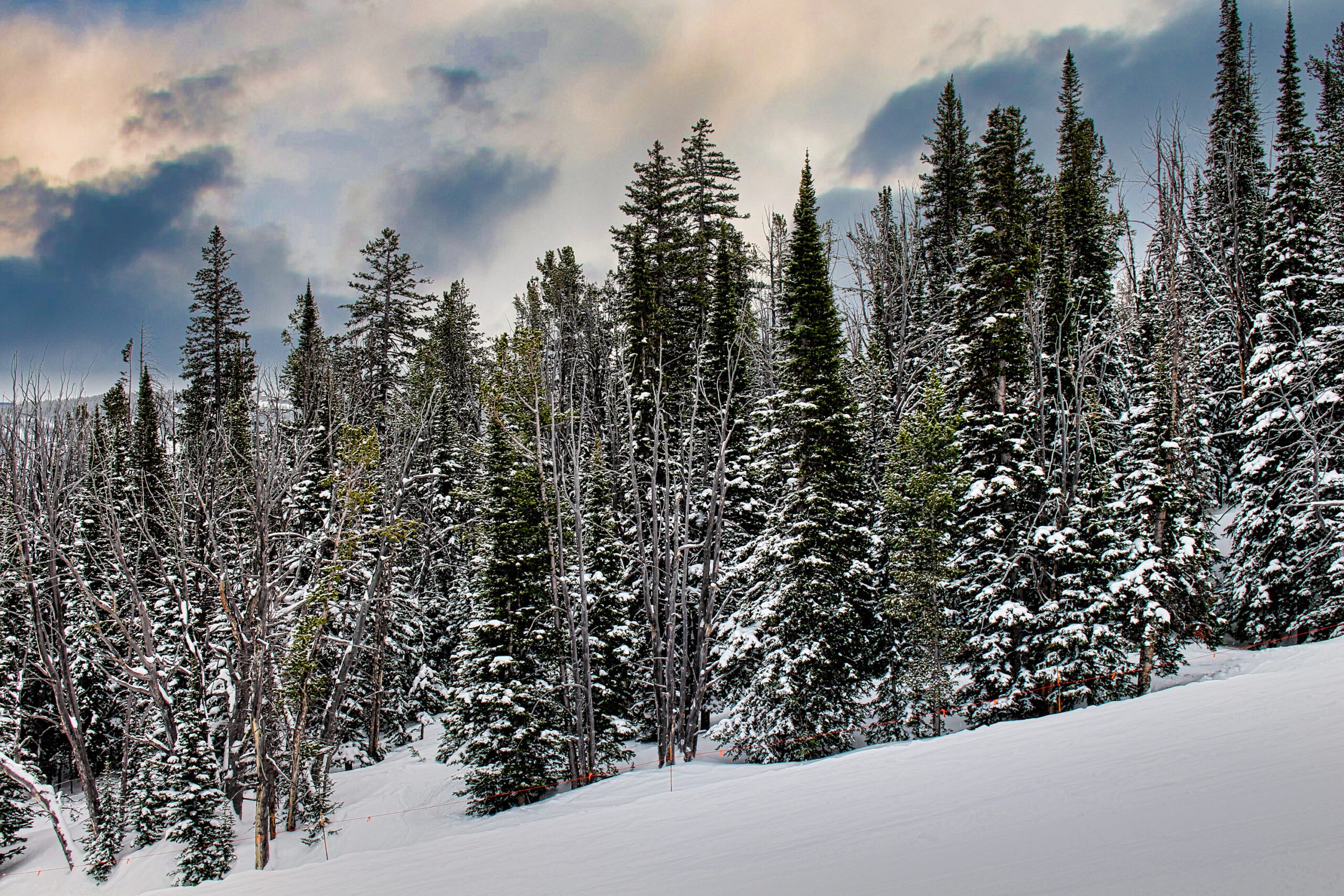By Paul Swenson EBS COLUMNIST

A famous quote attributed to then-Gov. Ronald Regan in the mid 1960s, “If you’ve seen one tree, you’ve seen them all.” We know that’s not true, of course, because we have so many different types of trees here in Big Sky. Often as I am riding the chairlift, people ask me about the trees we are passing. I try to teach them how to identify them by their shapes, colors, needle size, and cone shape. So, I thought that might be an interesting column for this week’s paper.
Here are the five major conifers you will see here in Big Sky: Lodgepole Pine, White Bark Pine, Subalpine Fir, Douglas Fir, and Engelmann Spruce.
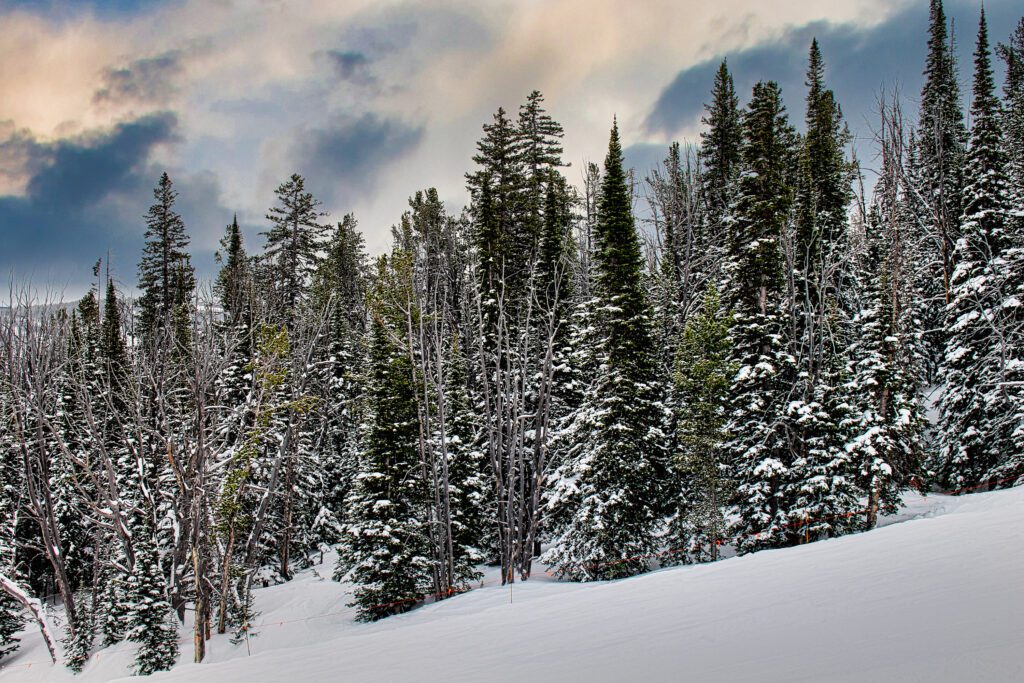
To help identify trees, let’s start with the needles. Lodgepole and Whitebark pine trees have long needles, about two inches long. The spruce and fir trees have short needles, less than an inch long. Lodgepole needles grow in groups of two, and the whitebark in groups of five or six.
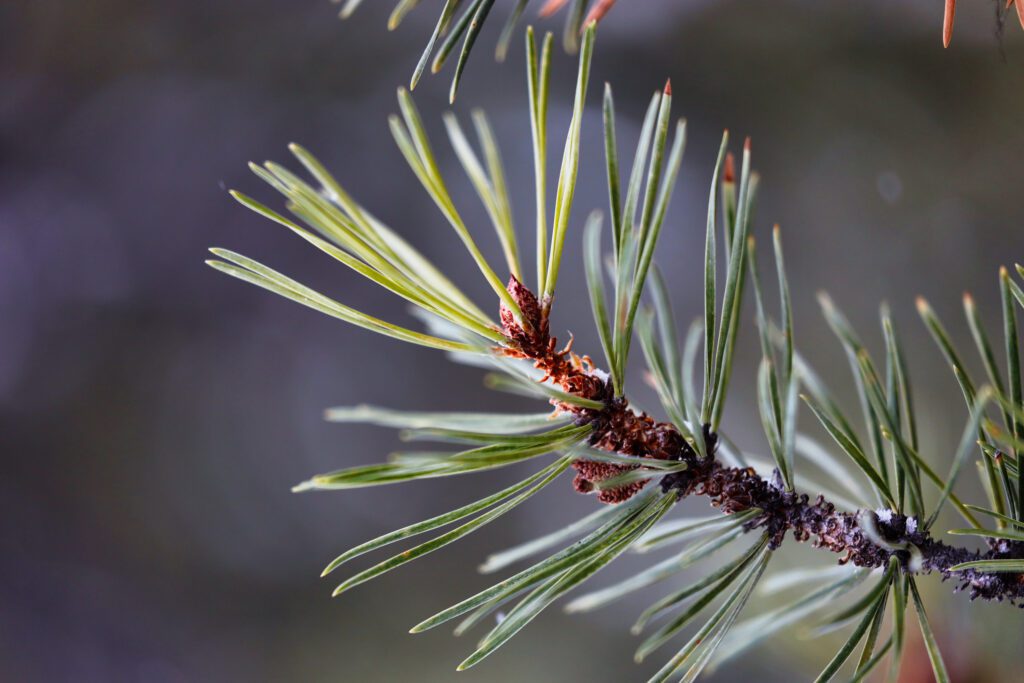
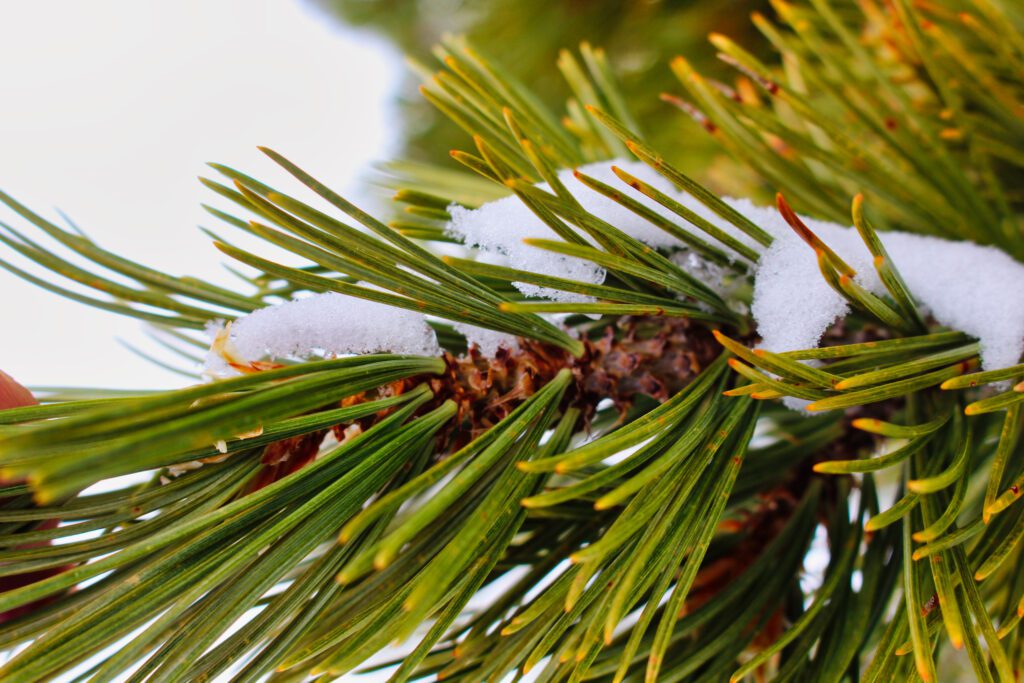
To distinguish between a fir and spruce needles, there are several methods. First, pet the branch. If you pet in the direction of the needles, they feel similar, but if you stroke against the needles, the spruce will prick you with their sharp ends, but the fir will be relatively soft, like fur. So fir = fur. Second, if you try to roll a needle between your fingers, the fir is difficult to roll because of its fairly flat cross section, whereas the spruce will roll because of its square cross section. You can feel the edges as you roll the needle.
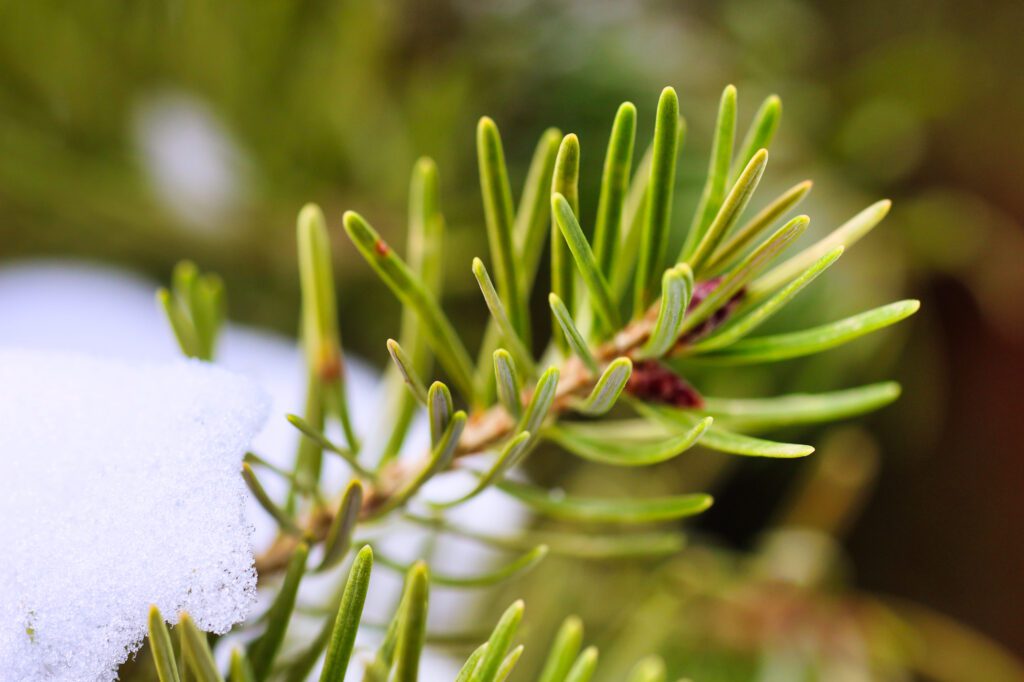
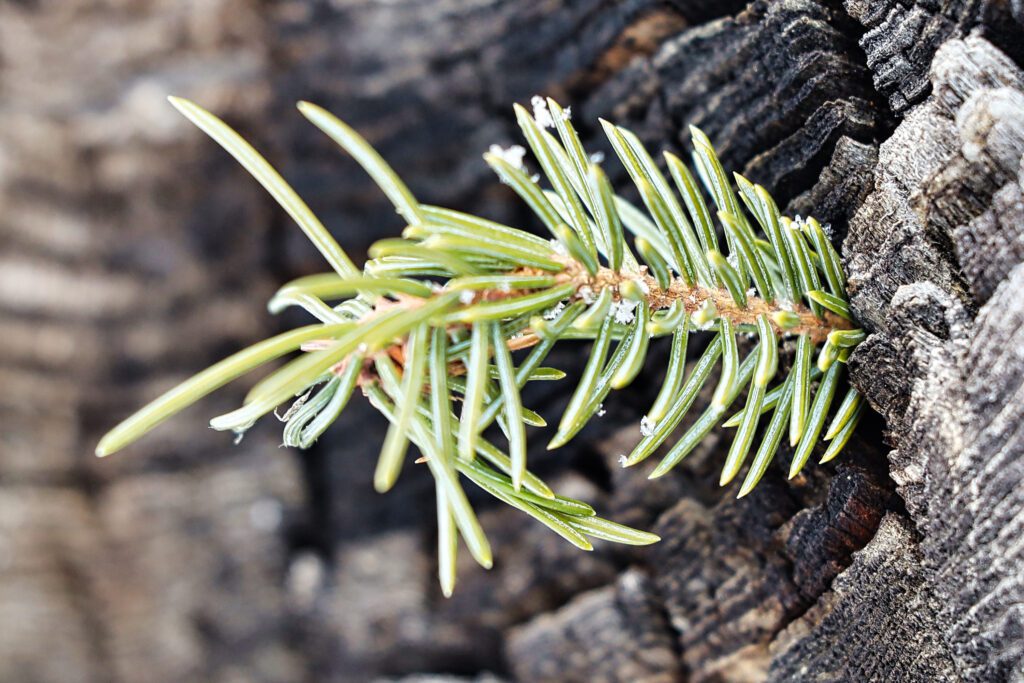
If you are walking along petting the trees like I do, you might get some strange looks, but you’re just getting “in touch with nature.” So to avoid these looks, the next way to identify our trees is to look at their trunks and the thickness, texture, and color of their bark. Douglas fir has what I describe as a topographical bark. It is very thick, cork-like, and has a lot of structure. Englemann spruce has thinner bark and it usually has one to three inch “potato chip” like structures where is appears like the bark is shedding. Lodgepole pine looks similar but the chip structure is smaller, around half to one inch in diameter. Then the last two, the whitebark pine and subalpine fir have what I like to call “elephant leg” trunks. The bark is usually smooth and grey with some wrinkles.
In the photos below, all trunks are 12 inches in diameter. The whitebark pine photo was taken at Big Sky Resort, all the others were taken along the Ousel Falls Trail.
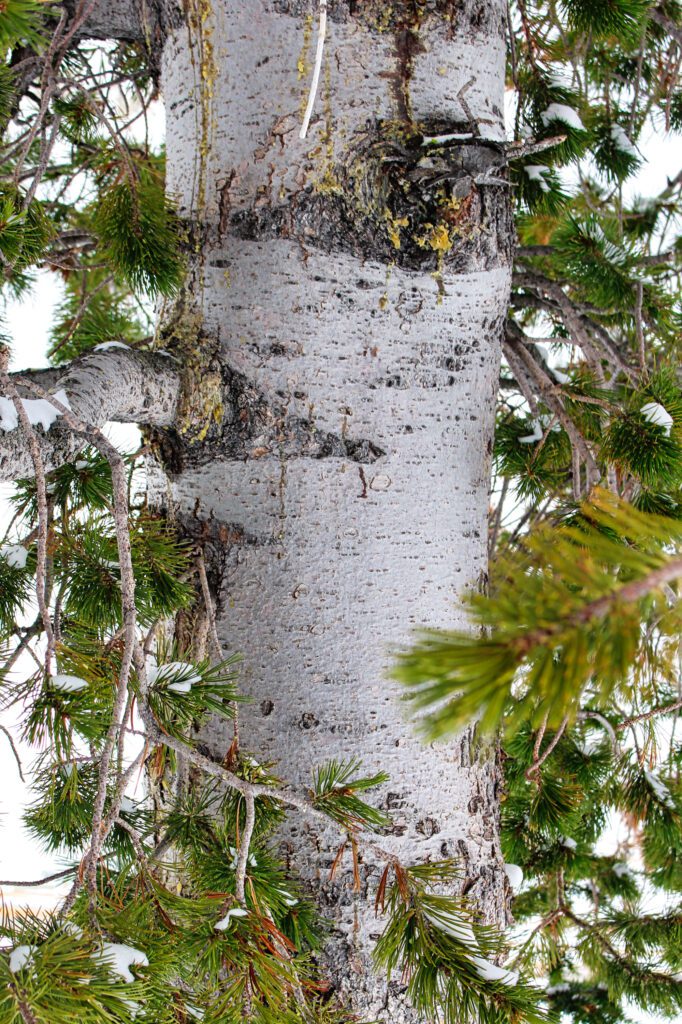
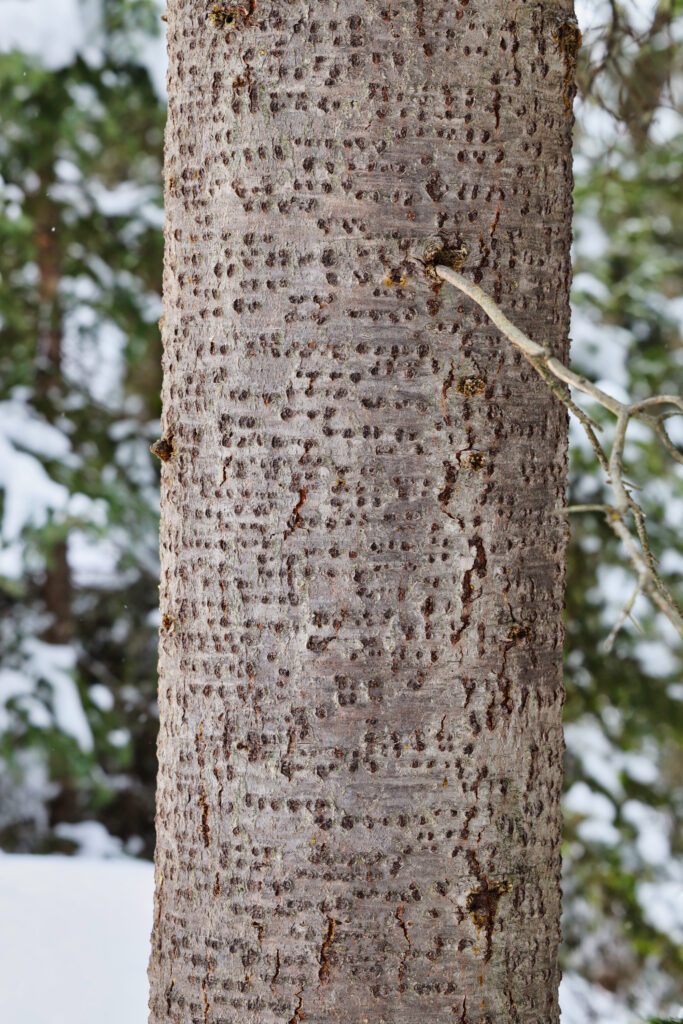
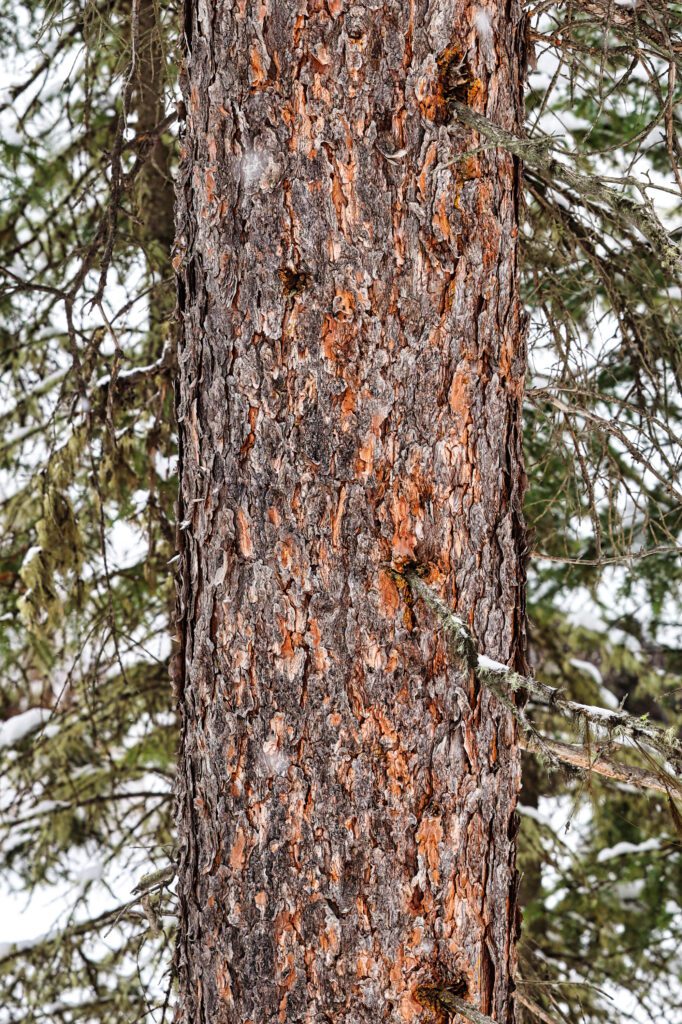


The last key feature is their shape and size. Douglas firs are the giants in our region. Some of the biggest trees around the meadow and canyon stretch are upwards of 150 feet tall with trunks up to 10 feet in diameter. When you ride up Thunder Wolf, they are all the huge trees in Elk Park. Englemann spruce are also very tall trees with trunks up to 4 feet in diameter. They have the classical evergreen tree shape with a slightly rounded top. They are the tall trees in the center of the first photo. Subalpine fir has a very skinny profile with a very spiky top. Seems to be the favorite of the “bead trees” along the old Swifty line. They are the spiky trees seen center right and right side of the first photo. Lodgepole are tall and straight with not a lot of branches. They are ubiquitous throughout the region, having very straight trunks. And last, the poor whitebark has a multitrunked habit, but most of them were devastated by blister rust and pine beetle over the last several decades. They comprise the ghost forests of the upper mountains. You can make out several small ones in the foreground of the photo, along with some dead trunks.
So hopefully now you can go out and see the trees in spite of the forest. I also hope to catch you somewhere petting a tree along a trail this winter or summer.
Last order of business today is to clear up a mistake from my last article on snow and ski wax. I used the word “hydrophilic” in my article, which means water loving. If your ski wax was in fact hydrophilic it would be like skiing with carpet on your bases. When I looked at my article after it was printed I was horrified by that mistake. Nonpolar molecules are in fact hydrophobic, meaning water repelling, which is what you want from a wax. For those of you that caught that error, congrats.
Paul Swenson has been living in and around the Big Sky area since 1966. He is a retired science teacher, fishing guide, Yellowstone guide and naturalist. Also an artist and photographer, Swenson focuses on the intricacies found in nature.



